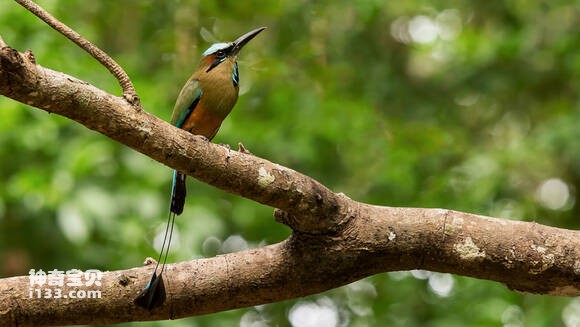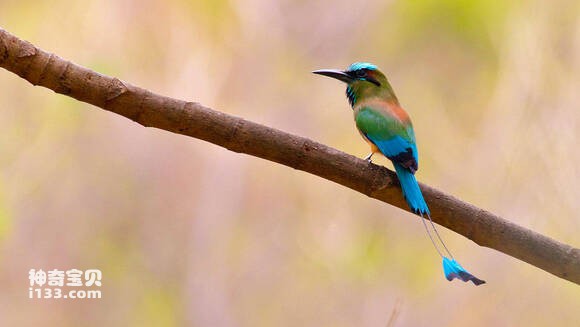Eumomota superciliosa
IUCN
LCBasic Information
Scientific classification
- name:Eumomota superciliosa
- Scientific Name:Eumomota superciliosa,Turquoise-browed Motmot
- Outline:Climbing birds
- Family:
Vital signs
- length:About 34 cm
- Weight:About 65g
- lifetime:No textual research information is available
Feature
It is the national bird of El Salvador and Nicaragua.
Distribution and Habitat
It is found in Costa Rica, El Salvador, Guatemala, Honduras, Mexico, Nicaragua.
Inhabits open environments such as forest edges and jungles. Often left on telephone poles and fences.
Appearance
The green megalod «¡ is a brightly colored and medium-sized climbing bird, about 34 cm long and 6 cm in weight The body is mainly olive green, and the back and abdomen are yellowish-brown or reddish-brown. There is a bright blue stripe on the eyes, a dark spot on the throat, the top of the flight feathers and tail are blue, and the end of the tail feathers is racquet shaped. The beak is long, broad and slightly curved, with serrated margins. The bases of the two toes facing forward are partially healed. The tail is long, the central tail feathers are long, and there is a section at the near end of the only residual shaft, resulting in the end of the formation of independent small feathers, forming a racquet shape, which is its distinctive feature, and the feather shaft is longer than other green ð«¡ Sex is different.
Details
Green meishu ð«¡ Eumomota superciliosa, foreign name Turquoise-browed Motmot, there are 7

It feeds and sometimes eats insects, worms, lizards, various invertebrates and small vertebrates When waiting for prey, it can calm down for a long time, and once it finds prey, it will suddenly pounce. The tail often swings from side to side or leans on a perch. Dig holes in the cliffs, earth embankments, Wells and mines at the water's edge or dig holes in the sand with curved mouths for nests. The nests are in the shape of long tunnels. Lay 3 to 4 white eggs, both sexes hatch and brood.

Listed on the International Union for Conservation of Nature (IUCN) 2012 Red List of Threatened Species ver 3.1 - Low Risk (LC).
Protect wild animals and eliminate wild meat.
Maintaining ecological balance is everyone's responsibility!








